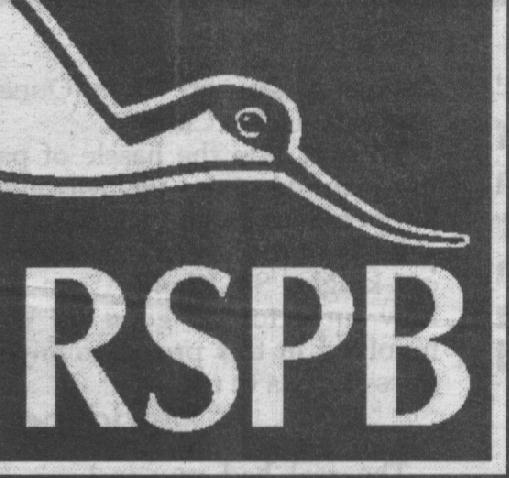From the Cumbernauld News and Kilsyth Chronicle
December 11 2002
A special feature for the News and Chronicle
courtesy of the Royal Society for the Protection of Birds
(Scotland)

December in Cumbernauld and Kilsyth
The distinctive and
evocative trumpeting call of the
whooper swan can be heard around Cumbernauld and
Kilsyth during the winter months.
This majestic bird, a common winter
visitor to the region,
with its striking yellow bill markings, is the national bird of
Finland.
Most of our winter visiting birds
are from Iceland and the
numbers visiting Britain depend largely on the success of the
previous breeding season, together with the severity of the
Icelandic weather.
Look for reddish stains on whooper
swans. This is a
result of oxides in the water and can give them an unusual
appearance.
Whooper swans are likely to be
seen around meadows and
stubble fields, usually by estuaries and rivers, where they feed
on aquatic plants, waste grain and potatoes.
The collective term for a group
is a wedge of swans!
Whooper swans can be found at
Hogganfield Loch near
Stepps and occasionally at Bishop Loch on the edge of
Easterhouse. Small numbers have in the past been seen
around Croy, while some birds have beenfound around
Twechar and in the Kelvin Valley.
The festive season would not be
complete without one of
our best known birds, the robin, common to our parks,
Gardens and woodlant, It is considered a sacred
and holy bird, due to the belief that it plucked out the
sharpest thorn from the brow of Christ and in
doing so, the bird's chest became stained with blood.
It has been associated with Christmas
cards since the mid-
19th Century, when postmen were known as robins due to
the red tunic they wore as part of their uniform.
It is believed that breaking the eggs of a robin
would result in
a valuable possession being broken. While they have been
known to live for ten years, only a quarter live beyond one year.
Traffic and domestic cats pose the biggest threat.
While robins can be aggressive
in defending their territory,
in late summer they can become shy and silent as they begin to
moult. In harsh winters, their territorial instincts can disappear
as they feed together on bird tables and in gardens.
Holly
THERE are few trees more closely
associated with the mid
winter festival as holly, with its smooth grey bark and shiny,
dark green spiny evergreen leaves, contrasted and
complemented during our winter months by rich red berries
that are welcome food for birds and animals.
The evergreen leaves of holly
were seen as a symbol of
natural rebirth and used to decorate house entrances because
of its prickles, which could snag fairies and other negative
forces before they entered the house
The holly
and the ivy
When they are both full grown
Of all the trees that are
in the wood
The holly bears the crown
The traditional carol possibly
comes from one belief that
for the first part of the year, the oak king rules the woodland.
When the oak begins to lose its
leaves, the evergreen holly
is crowned as the holly king, standing guard over the wood
while the oak regains its strength and power.
However there are less harmonious
versions of the tale with
great conflicts between the holly and the oak over ruling the
wood.
Holly wood is excellent for carving
and for inlay work and
was used to make chariot wheels and spear shafts. An
abundant crop of holly berries is said to point to a hard winter
ahead. Planted outside a house it is thought to ward off fire
and
storms and builders once made steps of houses from holly wood
so witches could not enter. At Hogmanay in the Highlands,
people used to be whipped with prickly holly boughs -- for
good luck! Each drop of blood would bring good fortune to the
poor recipient.
Holly leaves
THE Winter Solstice falls on December
22 at 4am,
following the full moon on December 19th. This is our
shortest day, when the sun is at its lowest point in the sky.
The Winter Solstice is also known
as the Festival of
Growth, Yuletide and Yule, The custom of the yule log
is well known in the northern hemisphere, when a large
freshly cut log is brought to the hearth on Christmas Eve.
Prayers are recited as the log is sprinkled with mulled
wine, salt and oil, then burnt on the fire.
This was said to protect the house
from lightning and other
misfortune. Stags, red squirrels, wrens and robins are all
associated with yule and the winter solstice as are mistletoe,
evergreen trees and shrubs, pine trees, nutmeg, saffron and
ginger.
RSPB Scotland Forth Valley
local group have indoor
meetings and talks in the Cowane Centre, Stirling.
For further information contact Etta Payne on
01324 711610.
RSPB Scotland Glasgow local group
have group outings
and indoor meetings held in Woodside Halls, Clarendon
Street, off Maryhill Road. For further information contact
Jim Coyle on 0141 579 7565.
Our big garden bird watch takes
place on the weekend of
25th and 26th January 2003. No experience is necessary
and all results provide vital information about garden bird populations.
All we ask is for you to watch and record the
birds in your garden, park or school grounds for just one
hour.
RSPB Scotland works for a healthy
environment, rich in
birds and other wildlife. We depend on the support and
generosity of others to make a difference. If you would like
to help, please join the Society.

